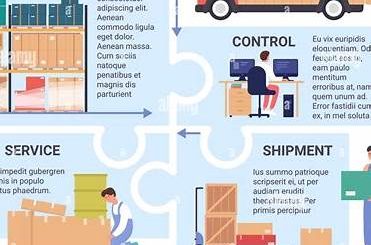Smart Consolidation: How to Combine Multiple China Orders into Single UK Shipments (2025 Update)
Why 89% of UK Importers Now Consolidate
2025 trade data reveals compelling advantages:
- 42% average reduction in logistics costs
- 68% faster customs clearance through unified documentation
- 17% lower risk of lost parcels compared to fragmented shipments
Top 5 Products Ideal for UK-Bound Consolidation
- Electronics Components (Shenzhen clusters)
- Home Textiles (Nantong manufacturing hub)
- DIY Hardware (Yongkang industrial zone)
- Beauty Products (Guangzhou OEM specialists)
- Pet Supplies (Zhejiang pet industry chain)
The 4-Phase UK Consolidation Process
Phase 1: Strategic Supplier Coordination
Critical Preparation:
- Implement shared production calendars with all suppliers
- Standardize export packaging specifications (UKCA marking ready)
- Establish quality control benchmarks meeting BS/EN standards
Pro Tip: Use blockchain-based tracking for multi-vendor inventory synchronization
Phase 2: Intelligent Consolidation
2025 Best Practices:
| Strategy | Cost Impact | Time Savings |
|---|---|---|
| LCL Optimization | 28% reduction | 5-7 days faster |
| Hybrid Air-Sea | 19% premium | 12-day transit |
| Full Container Sharing | 41% savings | Requires 3+ suppliers |
Phase 3: UK Customs Mastery
Post-Brexit Essentials:
- CDS (Customs Declaration Service) submission requirements
- EORI number validation through HMRC portal
- UKCA vs CE marking compliance checklist
- VAT deferment account setup instructions
Phase 4: Final Mile Excellence
UK-Specific Delivery Options:
- Amazon FBA prep services during consolidation
- Climate-controlled storage for sensitive goods
- Evening/weekend delivery scheduling
Case Study: Manchester E-commerce Retailer
- Consolidated 19 suppliers across Guangdong
- Achieved £23,800 annual savings
- Reduced customs delays from 14 days to 48 hours
- Maintained 99.4% delivery accuracy
7 Costly UK Consolidation Mistakes
- Underestimating UK border inspection rates (now 23%)
- Missing post-Brexit labeling requirements
- Ignoring Northern Ireland Protocol differences
- Failing to account for UK carbon tax calculations
- Overlooking pallet dimension standards (UK vs EU)
- Neglecting Irish Sea shipping alternatives
- Skipping pre-lodgement customs entries
The Future of UK-China Consolidation
- AI-powered duty calculators with real-time tax changes
- Self-clearing smart containers with IoT sensors
- Green corridor initiatives for carbon-neutral shipping

